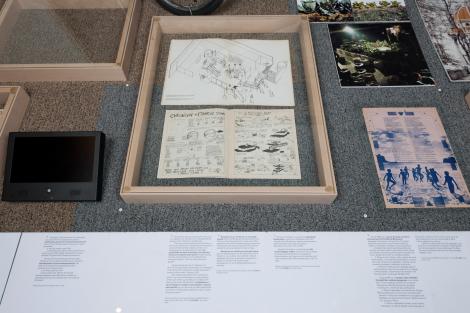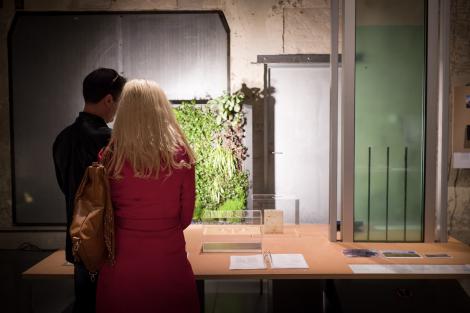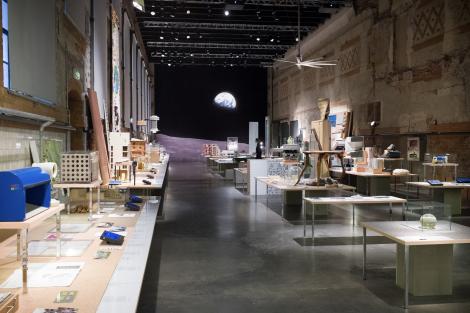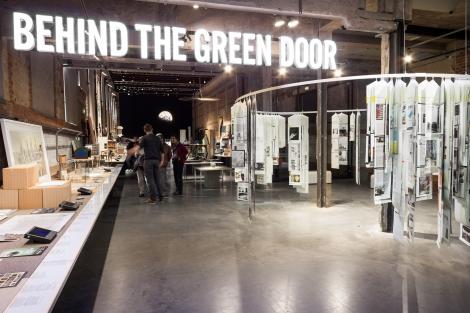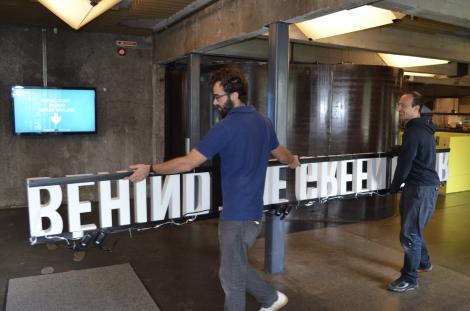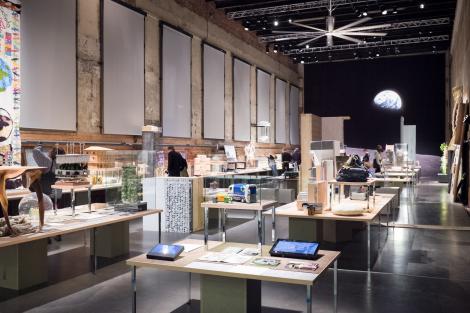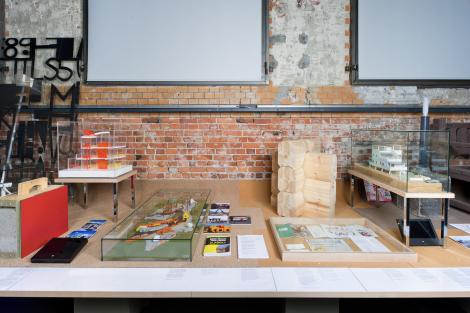Behind the Green Door @ Oslo Architecture Triennale
Architecture and the Desire for Sustainability
Every so often society experiences a profound shift in its model of perceiving the world. Economical, social, technological forces align to enable ideas and modes of organisation unimaginable just a few years before. If history teaches what the driving forces have been of past revolutions, it does not provide clear instructions on how to provoke one on demand, let alone manage one. Yet it is precisely such a shift that, in recent years, became the ultimate political ambition of European society: to break away from existing schemes in favour of a model that would be in harmony with the environment. To achieve that goal, architecture (at all scales) is brought forward as a strong lever. Its role, as it's being envisioned, is to induce a silent revolution. To change how communities relate to nature and themselves. To build a sustainable society.
Main Exhibition
As a starting point for the main exhibition, we looked at a broad variety of building projects that claim to be sustainable. Rather than starting from our own assumption as to what is to be considered sustainable, and then trying to find good examples to illustrate our point, we have chosen to document what others call ‘sustainable’.
To talk about these projects, we did some reverse archaeology. We collected significant fragments and relics that bear testimony of the environmental aspirations. A digital render, façade study model, software package, promotional leaflet, material sample, mock-up, quote... our collection of physical and digital objects quickly grew into an impressive quantity of materials, which we narrowed down to 600 pieces. Each of these is presented as an original artefact, accompanied by short, factual captions that help the visitor to understand the context it was taken from.
Some of the exhibits assume that large scale action is the way forward, others stick to acupunctural interventions. Some advocate technological innovation, others hinge on changes in consumption patterns. Some are rural, others are urban. Some intervene heavily in the built environment, others refrain from doing so. The selection we’ve made, however subjective and arbitrary, was deliberate in its intention to be diverse. We have allowed ourselves to be liberal about what constitutes the boundaries of the field of architecture. The exhibition includes product design, graphic design, urban planning, engineering as well as many other disciplines in its purview.
The exhibition is open-ended. Visitors are not offered a single narrative that ties everything together. There is no imposed sequence, not one overarching perspective from which to look at things, not one conclusion to be drawn. The exhibition doesn’t want to convince the visitor to live his or her life more sustainably but instead wants to show how the concept of sustainability operates as a powerful agent of change in today’s world.
Details
Rotor members in charge
Maarten Gielen, Lionel Devlieger (directors)
Tristan Boniver, Benjamin Lasserre
Assistant curators
Giulia Caterina Verga, Livia Cahn
Logistics coordination
Elise François (Oslo exhibition)
Collaborators
Tiffany Obser, Victoria Abelsen, Sarolta Hüttl (research)
Ruth Kennivé, Kent Wilson, Iveta Bláhová, Bernardo Robles Hidalgo (graphic design and production)
Jeroen Verrecht (logistics and scenography - Copenhagen exhibition)
Support
The Flemish authorities, Wallonie-Bruxelles International.
